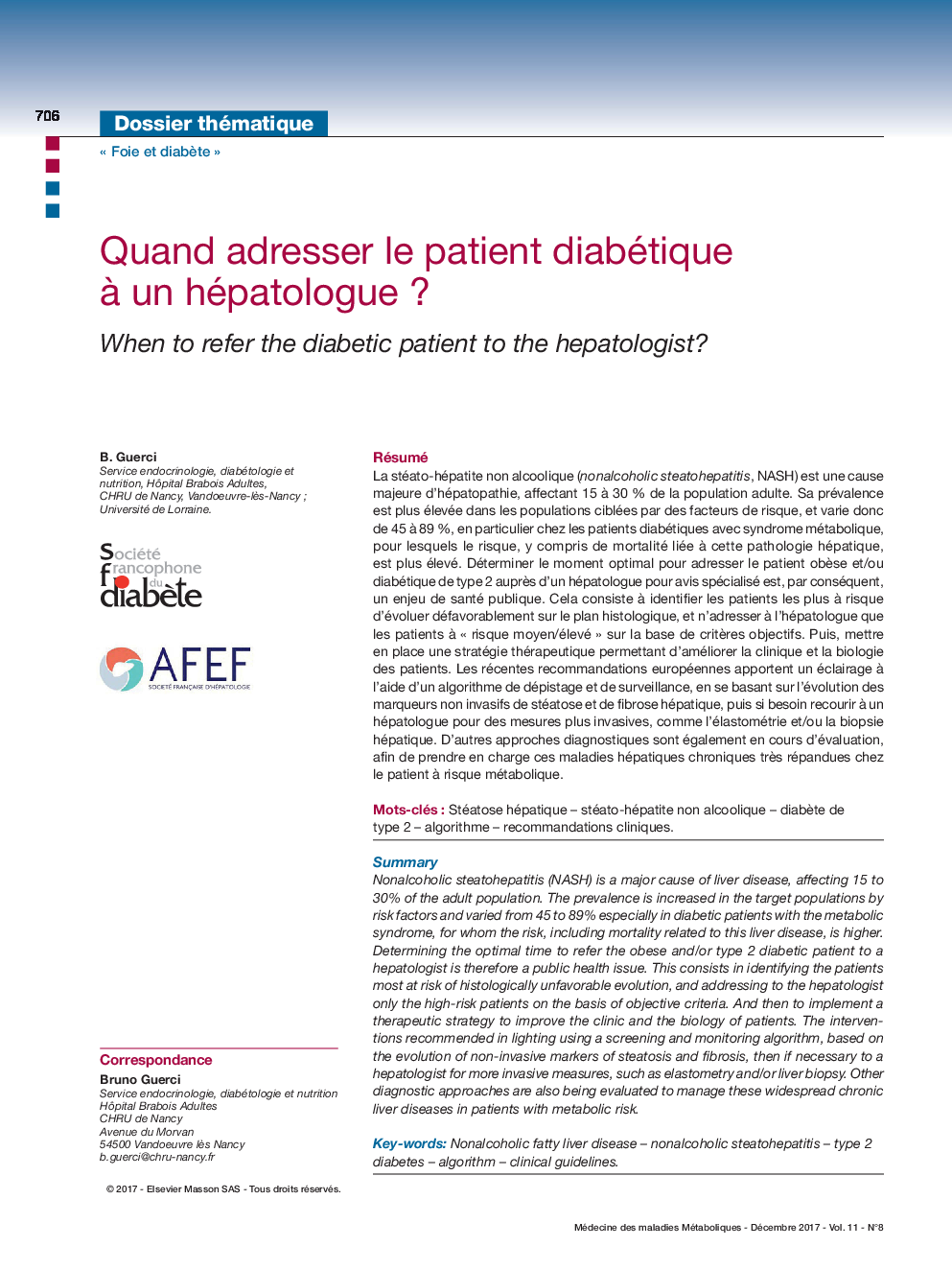| Article ID | Journal | Published Year | Pages | File Type |
|---|---|---|---|---|
| 8723460 | Médecine des Maladies Métaboliques | 2017 | 5 Pages |
Abstract
Nonalcoholic steatohepatitis (NASH) is a major cause of liver disease, affecting 15 to 30% of the adult population. The prevalence is increased in the target populations by risk factors and varied from 45 to 89% especially in diabetic patients with the metabolic syndrome, for whom the risk, including mortality related to this liver disease, is higher. Determining the optimal time to refer the obese and/or type 2 diabetic patient to a hepatologist is therefore a public health issue. This consists in identifying the patients most at risk of histologically unfavorable evolution, and addressing to the hepatologist only the high-risk patients on the basis of objective criteria. And then to implement a therapeutic strategy to improve the clinic and the biology of patients. The interventions recommended in lighting using a screening and monitoring algorithm, based on the evolution of non-invasive markers of steatosis and fibrosis, then if necessary to a hepatologist for more invasive measures, such as elastometry and/or liver biopsy. Other diagnostic approaches are also being evaluated to manage these widespread chronic liver diseases in patients with metabolic risk.
Keywords
Related Topics
Health Sciences
Medicine and Dentistry
Endocrinology, Diabetes and Metabolism
Authors
B. Guerci,
